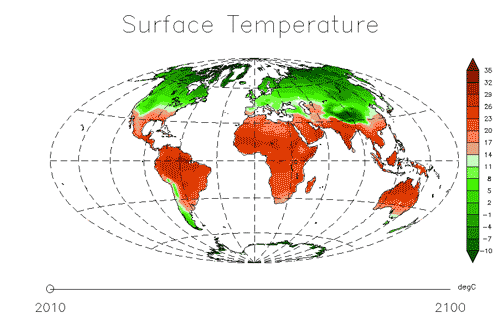Welcome to the ORCHIDEE Land Surface Model

This is the official website of ORCHIDEE (Organising Carbon and Hydrology In Dynamic Ecosystems) – the land surface model of the Institut Pierre Simon Laplace (IPSL) earth system model (IPSL-CM).
The ORCHIDEE model –
- represents the state of the art in global land surface modelling. It is the intent of the development team to remain at the forefront of this exciting field.
- can be run as part of the IPSL Earth System Model (ESM), but may also be deployed as a stand alone terrestrial biosphere model. The latest version, which can be run in a coupled set-up, may be obtained by submitting a request through our contact page. When run as a stand alone model, thematic versions (or branches) with increased functionality in specific areas are also available.
- is widely used by researchers in France, China, Belgium, Germany and the USA. It has resulted in a number of publications in high-impact journals such as Nature, Science, PNAS and Nature Geoscience.
- is well established in the international research community. Its simulations have contributed to the Nobel prize winning efforts of the IPCC, as well as to numerous landmark projects such as the Global Carbon Project, LUCID and iLambs, CMIP3 and CMIP4.
The ORCHIDEE team is continuously enhancing the scientific capacity of the model by means of new developments. At the same time, a persistent effort is maintained to guarantee the quality of the model code and its simulations. If ORCHIDEE can contribute to your research, or your skills and expertise could strengthen our team, please don’t hesitate to contact us to discuss future collaboration.
A history of ORCHIDEE
- During the 1980s, the introduction at the Laboratoire de Météorologie Dynamique (LMD) of a global General Circulation Model (GCM) stimulated the development of a specific land surface model in order to calculate the energy and water balance of terrestrial ecosystems. The first version of the model was therefore developed as a global tool that was directly coupled to the atmospheric LMD GCM, and is described in Laval et al. (1981)
- In the early 1990s, the model was substantially refined, with a description of the earth surface categorized into several biomes or Plant Functional Types (PFTs). These PFTs could be mixed within each simulated grid cell, applying a ‘big leaf’ approach for the energy budget and a double bucket model for the soil hydrology. This version of the land surface scheme, named SECHIBA, was first described in Ducoudré et al. (1993)
- In the late 1990s, a substantial overhaul of the model code was undertaken at the Institute Pierre Simon Laplace (IPSL), in order to improve its readability, portability, and flexibility with respect to the atmospheric circulation model coupling (Polcher et al., 1998)
- In the early 2000s, the Dynamic Global Vegetation Model (DGVM) of ORCHIDEE was created. It was based on the coupling of SECHIBA with: i) a carbon module – STOMATE, which describes the flow of carbon within the soil-plant-atmosphere continuum (Viovy, 1996) and ii) a dynamic vegetation module inherited from the LPJ model (Sitch et al., 2003), which simulates the evolution of natural vegetation with climate. This effort was conducted between the LMD and LSCE laboratories. The complete ORCHIDEE model was first described in Krinner et al. (2005).
Some key references:
- Ducoudré, N. I., K. Laval, and A. Perrier (1993), SECHIBA, a new set of parameterizations of the hydrologic exchanges at the land-atmosphere interface within the LMD atmospheric general circulation model, Journal of Climate, 6, 248– 273 (link)
- Viovy, N. (1996), Interannuality and CO2 sensitivity of the SECHIBA-BGC coupled SVAT-BGC model, Physics and Chemistry of The Earth, 21, 489– 497 (link)
- Polcher, J., McAvaney, B., Viterbo, P., Gaertner, M.-A., Hahmann, A., Mahfouf, J.-F., Noilhan, J., Phillips, T., Pitman, A.J., Schlosser, C.A., Schulz, J.-P., Timbal, B., Verseghy D., and Xue, Y. (1998) A proposal for a general interface between land-surface schemes and general circulation models. Global and Planetary Change, 19:263-278. (link)
- Krinner, G., N. Viovy, N. de Noblet-Ducoudré, J. Ogée, J. Polcher, P. Friedlingstein, P. Ciais, S. Sitch, and I. C. Prentice (2005), A dynamic global vegetation model for studies of the coupled atmosphere-biosphere system, Global Biogeochemical Cycles, 19, GB1015, doi:10.1029/2003GB002199. (link)

